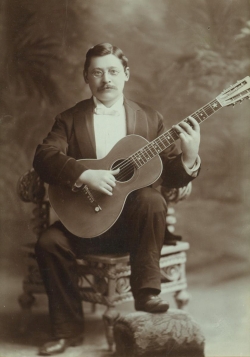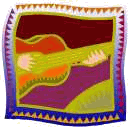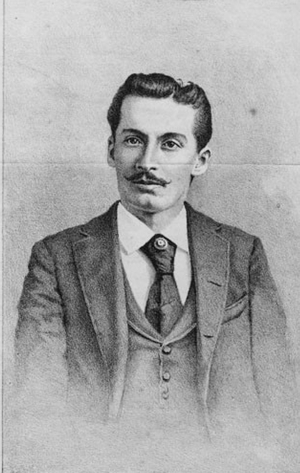Guitar Music of William Foden

William Foden (23 March 1860 – 9 April 1947) was an American composer, musician, and teacher. Foden is considered America's premiere classical guitarist during the 1890s and the first decades of the twentieth century.
Foden was born in St. Louis, Missouri and initially started with the violin at age 7, changing from age 16 to the mandolin and classical guitar. He studied guitar with William O. Bateman (1825–1883), "a successful lawyer, music engraver, guitarist, and nationally recognized guitar composer"[2] His professional career began in the 1880s, gaining national notoriety from the early 1890s. "Having an aversion to traveling and leaving his family, he did not fully capitalize on his growing fame" until 1904, when he was invited to play at Carnegie Hall.
In 1911, Foden and his family moved to Englewood, New Jersey,[5] near New York City, after a successful eight-month tour of the United States and British Columbia together with Giuseppe Pettine (mandolin) and Frederick Bacon (banjo), with newspapers referring to them as "The Big Trio".[6] At Englewood, he taught guitar and other fretted instruments at a studio at 42nd Street. For the publisher Wm. J. Smith he arranged numerous works for mandolin orchestra, guitar, banjo, ukulele, and Hawaiian steel guitar. His Grand Guitar Method in two volumes (1920, 1921) contains numerous original compositions, in addition to nearly 50 solo compositions published independently. He also left more than a hundred compositions and arrangements in manuscript.
He was especially famous for his extraordinary tremolo technique.
Note - The above is from the Wikimedia page about William Foden
During his time living in New Jersey, he worked with the guitar maker C. F. Martin & Co. to design the Foden Specials.. The promotional brochure stated that each guitar was “examined by Mr. Foden before being shipped.”
After living for nearly 30 years on the East Coast, Foden returned to St. Louis in 1939. He spent his remaining days teaching and composing before passing away in 1947 during a flu epidemic.
Guitar music
in this collection:
Alice Where Art Thou
Annie Laurie
Celebrated Diamond Clog
Chevalier March
Emperor Polka
Enchantment
Esperanza
Flower Girl Schottische
Grand Valse Caprice
Herald March
Home Sweet Home
Il Grande Gavotte
La Ballerina WaltzLa Reve
Our Bonnie Boat
Princess Mazurka
Progression March
Barcarolle
Preludes
Maritana
Pizzicato (From the Ballet Sylvia - (Leo Delibes)
Der Freischutz (C. M. Weber)
Massa's In De Cold Cold Ground (Stephen Foster)
Meneut Celebre (Boccherini)
Spring Song (Mendelssohn)
Flower SongConvent Bells
Don't Forget To Write To Me Darling (Varied)
Listen To The Mocking Bird (Varied)
Annie Laurie Grand Fantasie
Grand Fanatasie of American Songs
In The Starlight (For 2 Guitars)
Monogram Schottische
La Ballerina Waltz (For 2 Guitars)This sheet music collection is a PDF file with scans of the original published sheet music prepared for easy printing on standard size paper.
Price - $4.00
After your secure payment is processed you will immediately be sent the download link to the email you give while purchasing the collection.







 including the music of the spheres, the music of a Renaissance alchemist, music created by software and artificial intelligence, the music of the fairies, the music of the Illuminati, the world's most mysterious book, the world's oldest song, a way you can compose music like Mozart, the world's oldest love song,
including the music of the spheres, the music of a Renaissance alchemist, music created by software and artificial intelligence, the music of the fairies, the music of the Illuminati, the world's most mysterious book, the world's oldest song, a way you can compose music like Mozart, the world's oldest love song, 